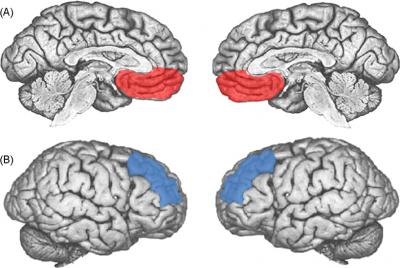The Neuroscience of Jazz
Improvisation is the main feature of Jazz that distinguishes it from other forms of music making. Improvisation is the spontaneous musical performance within a relevant musical context. It consists of novel melodic, harmonic and rhythmic musical elements. This unique feature of jazz offers the opportunity for neurobiological research or even creativity. What they did was do a functional MRI brain scan on 6 highly skilled professional jazz musicians.
These jazz musicians had to play a simple musical tune and an improvisation on this tune with the restriction to the use of C major scale quarter notes within the same octave of the simple tune. Next they had to play a memorized original jazz composition with the accompagnement of a pre-recorded jazz quartet followed by an improvisation of the memorized composition. In order to compare brain activity during these two conditions. Everything was recorded, the music and finger/hand movements. The participants used a keyboard in the fMRI without iron.
Spontaneous improvisation was in each case associated with a highly congruous pattern of activations and deactivations in prefrontal cortex, sensorimotor and limbic regions of the brain. In addition, the majority of these regions showed functionally reciprocal patterns of activity. That is, activations during improvisation were matched by deactivations during the control tasks, and vice versa, when each condition was compared to the resting baseline.
The prefrontal cortex was characterized by a deactivation during improvisation, sensorimotor activity in the sensory cortex area were mostly activated, and a widespread deactivation of the limbic and paralimbic region during improvisation. These deactivation of limbic and paralimbic regions were seen in the amygdala, hippocampus and hypothalamus and other structures of this region.
The changes in the prefrontal cortex consisted of a deactivation in the lateral parts and activation in the medial parts of the prefrontal cortex. The medial part is thought to play a role in the complex phenomenon of the self, internally motivated self generated content and as such this activation can be explained by the fact that improvisation is also a way of expressing one’s own musical voice or story. The deactivation of the lateral part is explained by the occurrence of free floating attention, permitting spontaneous expressions without interference of self-monitoring.

Activation of the sensorimotor regions is explained by the complex acoustic and sensory stimuli during improvisation on the keyboard. The hardest to explain is the widespread deactivation of the limbic structures who are associated with emotions. Deactivation of amygdala and hippocampus has been associated with the perception of music that is nice to the ears or elicits intense pleasure. This doesn’t explain the deactivation in other limbic structures.
![]()
Limb CJ, & Braun AR (2008). Neural substrates of spontaneous musical performance: an FMRI study of jazz improvisation. PloS one, 3 (2) PMID: 18301756
DIETRICH, A. (2004). Neurocognitive mechanisms underlying the experience of flow Consciousness and Cognition, 13 (4), 746-761 DOI: 10.1016/j.concog.2004.07.002

Wednesday Round Up #100 « Neuroanthropology
January 27, 2010 @ 11:01 am
[…] Shock, The Neuroscience of Jazz Tom Beek playing, plus fMRI studies of jazz […]
Neuro News Nanos - Ryan Sager - Neuroworld - True/Slant
January 28, 2010 @ 1:23 pm
[…] The neuroscience of jazz — jazz musicians had to play a simple musical tune and an improvisation on this tune with the […]
Thinkologist: The Dudley Lynch Blog on Brain Change » Blog Archive » A Special Valentine’s Day Reprise on Sex and the Brain: We Just Never Seem to Get Enough!
January 29, 2010 @ 12:08 am
[…] libido. Brain imaging studies show deactivation of the same areas of the brain in jazz musicians. Ergo, good sex is really a zonked-out brain improvisating! The “play” question then becomes do you […]
links for 2010-01-28 « Blarney Fellow
January 29, 2010 @ 2:34 am
[…] The Neuroscience of Jazz | Dr Shock MD PhD (tags: neuroscience brain music) […]
Benjamin A. Shelton | Blog » Blog Archive » Links of the Week: January 30th
January 31, 2010 @ 2:42 am
[…] never been a fan of Jazz, but if you’re particularly interested in the brain, this article “The Neuroscience of Jazz” should make for a fascinating […]
The Neuroscience of Jazz Improvisation | Technoccult
February 1, 2010 @ 7:28 pm
[…] ShockMD: The Neuroscience of Jazz […]
Who are more likely to experience flow? | Dr Shock MD PhD
February 22, 2011 @ 7:56 am
[…] written before about flow as part of creativity while improvising with Jazz. Flow can be defined as: the holistic sensation that people feel when they act with total […]
April 1, 2011 @ 10:23 am
I am happy that I learn something new.
Awesome way of expressing your ideas. You are my favourite.